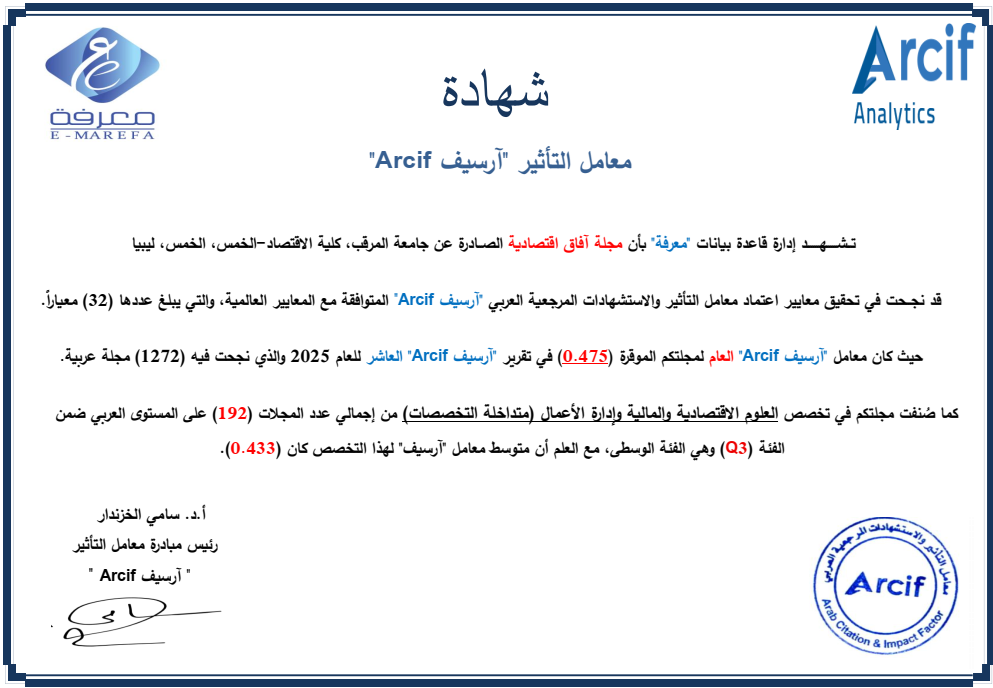Some obstacles to development in Libyan society
Field research in the Wadi Al-Shati area
DOI:
https://doi.org/10.65137/jaq.v1i02.133Keywords:
Development in Libyan societyAbstract
This study aimed to realize the development obstacles in Libyan society and reveal the problems encountered by Wadi Ashati area and their relationship with development. It tried also to answer some questions the more important of which are: What are the development obstacles in Libyan society in general? What are the problems encountered by Wadi Ashati Area? And what is their relationship with development? The study significance stems from the results concluded by the research which give the chance to the planners and officials together with the public and private institutions in the society to formulate programs and prepare certain plans which help to develop the society in different fields. For the methodology, the study used the descriptive approach by the social survey where a simple stratified random sample was chosen with (157) items from the civil society institutions, social leaderships and local society leaders (decision makers). The study was conducted in Wadi Ashati Area which is situated south west of Libya with a population of about 100,000. The study was conducted during the period from October 2013 to September 2014. For data collection, the method was the closed questionnaire Likrit scale. the data were statistically processed using frequencies and percentages.The study concluded a number of results the more important of which are as follows: 1. The social factor is considered to be one of the strongest obstacles that hinder the development in Wadi Ashati Area. The percentage of the people who agree at the problem of the tribal fanaticism reached 86% and the tribe interference in the state institutions at 80%. 2. Lack of exploiting the available resources where the percent of the people who agree at this factor reached 90%. 3. The widespread of passivity where the percentage of the people who agreed at this factor 95%. 4. The widespread of weapons and armed formations where the percentage of the people who agree reached 90%. 5. The climatic factor where the percentage of the people who agree at it reached about 85% especially the high temperature and the for distances between villages at 77% as well as the high salinity ratio at 71%.
Downloads
Published
How to Cite
Issue
Section
License
Copyright (c) 2015 Afaqeqtisadia Journal

This work is licensed under a Creative Commons Attribution-NonCommercial-NoDerivatives 4.0 International License.







